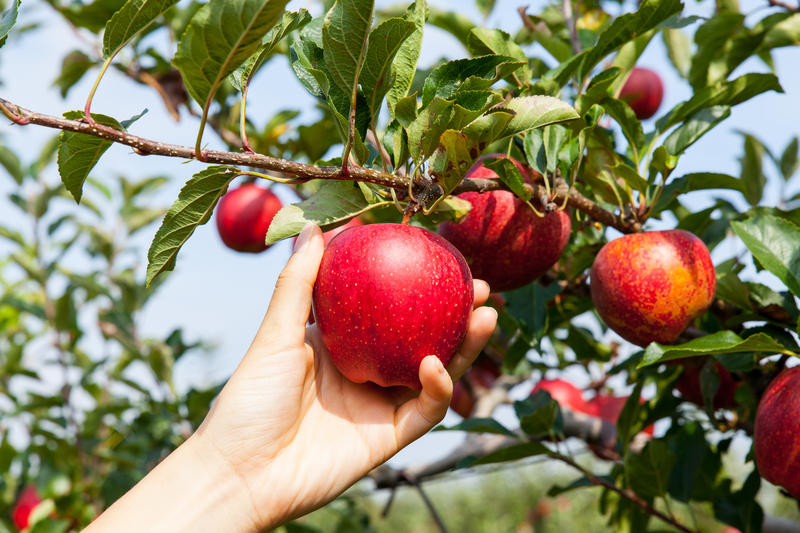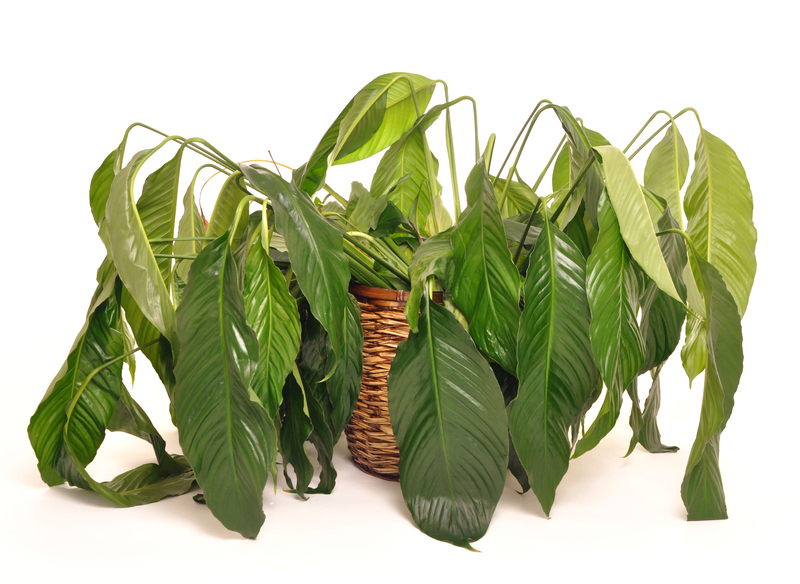Building Your Dream Herb Garden
Posted on 15/09/2025
Building Your Dream Herb Garden: A Comprehensive Guide
If you've ever fantasized about stepping outside and snipping fresh herbs for your kitchen, building your own dream herb garden can turn that fantasy into a fragrant, flavorful reality. The good news is, you don't need acres of land or expert-level gardening skills. Whether you're a beginner or a seasoned gardener looking to expand, this guide will show you how to design, plant, and maintain the herb garden of your dreams.

Why Start an Herb Garden?
Cultivating herbs at home has numerous benefits:
- Freshness and flavor: Nothing beats the taste and aroma of just-picked herbs in your dishes.
- Cost savings: Grow your own and save money on those expensive supermarket herb packages.
- Health: Fresh herbs are packed with vitamins, minerals, and antioxidants.
- Year-round beauty: Many herbs are attractive, evergreen, and can enhance your garden or windowsill.
- Therapeutic: The process of gardening is calming and rewarding.
Planning Your Dream Herb Garden
Finding the Perfect Location
Sunlight is crucial to growing healthy, vibrant herbs. Most herbs need at least 6 hours of direct sunlight daily. When choosing a location for your herb garden, consider the following factors:
- Exposure: South- or west-facing spots generally provide more sun.
- Shelter: While herbs need sun, protect them from strong winds that can dry them out.
- Drainage: Avoid soggy areas. Ensure soil drains well to prevent root rot.
- Accessibility: The closer your garden is to the kitchen or house, the more likely you'll use your herbs daily.
Choosing Between Containers, Raised Beds, or Ground Plots
Consider your space and lifestyle when deciding on the type of herb garden:
- Container Herb Gardens: Ideal for patios, balconies, and small spaces. Easily move pots for optimal sunlight and bring tender herbs indoors in winter.
- Raised Beds: Provide excellent drainage and make tending your garden easier on your back.
- In-ground Plots: Great for larger spaces, suitable for extensive herb collections or companion planting with vegetables and flowers.
Designing for Function and Beauty
Your dream herb garden should reflect both your culinary preferences and your aesthetic tastes:
- Kitchen Gardens: Focus on herbs you use most often: parsley, basil, cilantro, thyme, and oregano.
- Medicinal Herb Gardens: Include calming chamomile, soothing lavender, and healing calendula.
- Themed Herb Gardens: Try a pizza garden (oregano, basil, thyme), a tea garden (mint, lemon balm, chamomile), or a French bouquet garni (thyme, bay, parsley).
- Ornamental Layout: Herbs can also be arranged in decorative spirals, knot-gardens, or along garden paths.
Selecting the Best Herbs for Your Garden
Top Culinary Herbs for Beginners
If you're new to herb gardening, start with these easy-to-grow, versatile favorites:
- Basil: Loves warm weather and full sun. Essential for Italian and Thai cuisine.
- Parsley: Grows in sun or partial shade; great in salads, soups, and as a garnish.
- Chives: Hardy, perennial, and perfect for eggs, potatoes, and dips.
- Mint: Vigorous and best grown in pots to contain its spread. Wonderful for teas and desserts.
- Rosemary: A fragrant, woody shrub excellent for roasted meats and vegetables.
- Thyme: Low-growing with tiny, aromatic leaves. A kitchen staple for soups and stews.
- Cilantro (Coriander): Quick to mature and essential for Latin and Asian cuisine.
- Dill: Ideal for fish dishes, salads, and pickles.
Expanding Your Herb Repertoire
Once you master the basics, broaden your garden with:
- Oregano: Perfect for Mediterranean dishes.
- Lemon Balm: Bright, lemony leaves great for teas and desserts.
- Sage: Flavorful and wonderful for stuffing and butters.
- Tarragon: Adds sophistication to chicken and fish dishes.
- Lavender: Beautiful and aromatic, perfect for culinary and ornamental use.
- Bay Laurel: Evergreen shrub; leaves flavor soups and stews.
Getting Started: Planting Your Herb Garden
Preparing the Soil
Herbs thrive in well-drained, nutrient-rich soil. Here's how to set the stage for success:
- Test the soil pH: Most herbs prefer a slightly alkaline to neutral pH (6.0-7.5).
- Improve drainage: Add organic matter like compost, especially if your soil is heavy clay.
- Use quality potting mix: For containers, select a mix specifically for herbs or vegetables, adding extra perlite or sand if needed.
- Mulch: Top your beds or pots with light mulch to retain moisture and prevent weeds.
Starting from Seeds vs. Transplants
Both sowing seeds and planting young herbs have their merits:
- Seeds: Cheaper and provide a larger selection. Start indoors 4-6 weeks before the last frost or sow directly outdoors.
- Transplants: Faster results and ideal for beginners. Purchase healthy seedlings from a reputable nursery.
Planting Tips for Success
- Give space: Adhere to spacing guidelines on each herb's label. Crowded herbs can become diseased.
- Water wisely: Herbs prefer slight dryness between waterings. Overwatering can cause root rot.
- Label: Use weatherproof labels so you don't forget what you've planted!
- Companion planting: Some herbs enhance the growth of others. For example, basil repels aphids from tomatoes nearby.
Caring for Your Herb Garden
Watering
Herbs generally dislike soggy soil. Water deeply but let the top inch or so dry out between sessions.
- Container-grown herbs: May need daily watering in hot weather as pots dry out faster.
- In-ground beds: Need deep, less frequent watering, especially once plants mature.
Fertilizing
Go easy on fertilizers--too much can lead to lush but bland-tasting herbs.
- Compost or slow-release organic fertilizers: Are usually sufficient once or twice per growing season.
- Avoid high-nitrogen fertilizers: They promote leaf growth at the expense of flavor.
Pruning and Harvesting
Regular harvesting is the secret to bushy, productive herbs.
- Snip regularly: This encourages new growth. For most herbs, cut back by up to 1/3 at a time.
- Flower removal: Pinch off flower buds (except for edible flowers like chives) to keep herbs from going to seed too soon.
Pest and Disease Control
While most herbs ward off insects naturally, some pests and diseases may still appear.
- Encourage beneficial insects: Ladybugs and lacewings love to dine on aphids.
- Use organic solutions: Neem oil sprays or insecticidal soap can manage most outbreaks.
- Air circulation: Plant herbs far enough apart to reduce fungal diseases.
Harvesting and Storing Your Herbs
Best Time to Harvest
Pick herbs in the morning after the dew dries but before the day's heat for maximum oil content (and flavor).
How to Harvest
- Pinch or cut: Take sprigs just above a leaf node--this encourages bushier plants.
- Don't overharvest: Never remove more than one-third of a plant at a time to ensure continued growth.
Storing and Preserving Herbs
Use fresh herbs immediately or preserve your harvest with these steps:
- Drying: Tie stems in small bunches and hang in a warm, airy place out of direct sun.
- Freezing: Chop herbs and freeze in ice cube trays with a little water or olive oil.
- Infusing: Make flavored vinegars or oils.
Creative Ideas to Elevate Your Herb Garden
Herb Spirals and Vertical Gardens
For those with limited space or a flair for design:
- Herb spirals: Stack stones or bricks in a spiral shape, creating tiers of microclimates for different herbs.
- Vertical herb gardens: Use wall-mounted planters, hanging pockets, or recycled pallets to maximize your space.
Edible Landscaping
Herbs aren't just tasty--they're beautiful. Mix culinary herbs like chives or nasturtiums among flowers or along pathways for a stunning edible landscape.
Herbs Indoors for All Seasons
Some of your favorite herbs can thrive indoors year-round if you provide enough light.
- Window sills: Choose south-facing windows for optimal sunlight.
- Grow lights: Supplement sunlight with LED grow lamps during dark months.

Common Mistakes to Avoid in Your Herb Garden
- Overcrowding: Too many plants packed tightly reduces airflow and increases disease risk.
- Overwatering: Herbs hate soggy soil. Allow soil to dry out somewhat between waterings.
- Choosing the wrong location: Most herbs require plenty of sun--shade means poor yields.
- Poor soil: Failing to amend or fertilize can leave herbs stunted and flavorless.
- Ignoring harvesting: Neglected herbs bolt (flower) and quality declines.
Conclusion: Enjoy Your Dream Herb Garden
With a bit of planning and care, building your dream herb garden is truly attainable. From a sunny windowsill to a lush outdoor raised bed, you'll be rewarded with fresh, delicious flavors at your fingertips--and a sense of satisfaction that only comes from growing your own food. So gather your seeds, plan your space, and get ready to harvest a bounty of herbs that will delight your senses all season long. Your dream herb garden awaits!
Start Your Dream Herb Garden Today!
Whether you're planting a container herb garden on your balcony, constructing an elaborate raised bed, or designing a landscape dotted with fragrant, useful plants, herb gardening is accessible, gratifying, and endlessly delicious. Happy growing!

